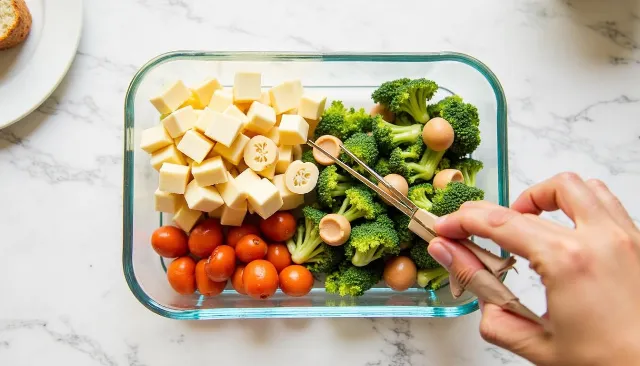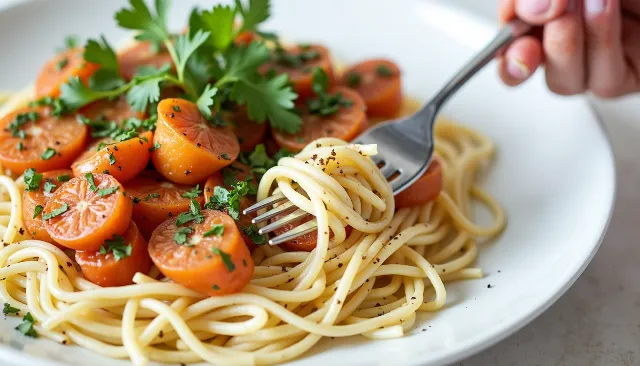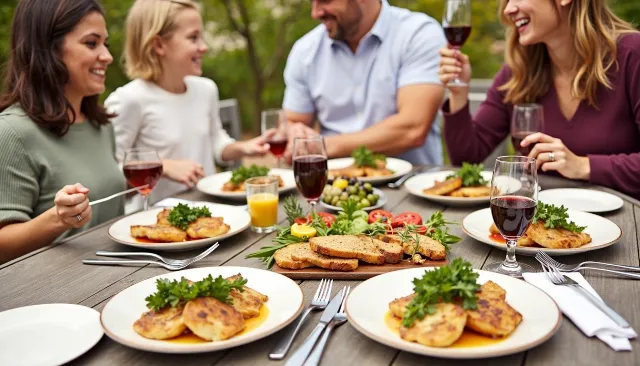Nepal is a country known for its majestic mountains, rich culture, and diverse ethnic groups. Along with these, its food culture is equally remarkable and reflects the essence of Nepali life. From simple homecooked meals to elaborate festival feasts, Nepali cuisine offers a unique blend of flavors, textures, and traditions.

This ultimate guide explores Nepali food culture in depth, from everyday meals to festival dishes, and provides an insight into how food plays a crucial role in the social and cultural fabric of Nepal. Nepali food is influenced by its geography, ethnic diversity, and neighboring countries like India, Tibet, and China.
It is primarily centered on rice, lentils, vegetables, and meat, seasoned with local spices and herbs. In this post, we will dive into the various aspects of Nepali food culture, from traditional meals and unique dishes to the role of food in celebrations and rituals. Let’s take a culinary journey into the heart of Nepal!
1. The Basics of Nepali Cuisine
Nepali cuisine varies depending on the region, but certain staples remain consistent throughout the country. Understanding these basics gives you a foundation for exploring the rich and diverse food culture of Nepal.
a. Dal Bhat: The Daily Meal
Dal Bhat is the most common and traditional meal in Nepal, consumed by people across the country. It consists of steamed rice (bhat) served with lentil soup (dal). The meal is usually accompanied by a variety of side dishes like vegetables (tarkari), pickles (achar), and sometimes meat or fish.
Ingredients:
Rice
Lentils (yellow or black lentils are commonly used)
Vegetables like spinach, cauliflower, potatoes, or radishes
Meat or fish (optional)
Spices: cumin, turmeric, garlic, ginger, and chilies
Why is Dal Bhat so important?
Dal Bhat is more than just a meal; it’s a symbol of sustenance and hospitality in Nepali culture. It is eaten twice a day, usually for lunch and dinner, and provides the necessary energy and nutrition for people who often engage in physical labor, especially in rural areas.
b. Gundruk: The Unique Fermented Vegetable
Gundruk is a fermented leafy green vegetable, often made from mustard greens or radish leaves. It is a popular dish in rural parts of Nepal and is typically served with rice or used in soups and pickles.
Why is Gundruk significant?
Fermentation is a traditional method of food preservation in Nepal, particularly in the colder regions where fresh vegetables are not always available. Gundruk is packed with nutrients and adds a tangy flavor to meals. It reflects the resourcefulness and ingenuity of Nepali food culture.
c. Rice: The Staple Food
Rice is the staple food in Nepal and forms the foundation of most meals. It’s served in various forms, from plain steamed rice (bhat) to flattened rice (chiura) and puffed rice (muri). It is the primary source of carbohydrates for Nepalis, providing them with the energy needed for their daily tasks.
Rice’s cultural significance:
Rice plays a key role in Nepali rituals, from birth ceremonies to weddings and even funerals. It is often used as an offering in religious practices, symbolizing prosperity and fertility.
2. The Influence of Geography on Nepali Food
Nepal’s geography plays a significant role in shaping its food culture. The country is divided into three main regions: the Himalayas, the hills, and the Terai (lowlands). Each of these regions has its own unique food traditions, influenced by climate, agriculture, and access to resources.
a. Himalayan Cuisine
In the cold, highaltitude regions of the Himalayas, food is designed to provide warmth and energy. Tibetan influence is evident in dishes like thukpa (noodle soup) and momo (dumplings), both of which are commonly found in the Himalayan areas of Nepal.
Thukpa: A warm noodle soup made with vegetables, meat, and a savory broth.
Momo: Steamed or fried dumplings filled with minced meat (buffalo, chicken, or yak) or vegetables, served with spicy chutney.
b. Hill Region Cuisine
The hill region is home to the majority of Nepal’s population and has a more varied food culture. Dal Bhat is the staple, but the dishes are often more diverse, incorporating a range of vegetables, legumes, and meats. Spices and herbs such as cumin, coriander, turmeric, and ginger are widely used.
Dhedo: A traditional dish made from millet or buckwheat flour, boiled to a thick, porridgelike consistency. It is often served with gundruk or meat curry.
Aloo Tama: A tangy soup made with potatoes (aloo) and bamboo shoots (tama), seasoned with turmeric and chili.
c. Terai Cuisine
The Terai region, which lies along Nepal’s southern border with India, has a food culture heavily influenced by Indian cuisine. The food is spicier, and dishes often include flatbreads like roti or chapati, as well as a variety of pickles and chutneys.
Puri and Tarkari: A popular breakfast dish consisting of deepfried bread (puri) served with vegetable curry (tarkari).
Litti Chokha: A stuffed dough ball made from whole wheat flour, filled with spiced gram flour, and served with mashed potatoes or eggplant (chokha).
3. Festivals and Special Occasions: A Celebration of Food
In Nepal, food plays an integral role in festivals and special occasions. Each ethnic group has its own culinary traditions for celebrating religious festivals, weddings, and other important life events.
a. Dashain and Tihar: The Biggest Hindu Festivals
During the Hindu festivals of Dashain and Tihar, families gather to celebrate with special meals. These festivals are marked by the preparation of traditional dishes that symbolize abundance and togetherness.
Goat Meat (Khasi ko Masu): A key dish during Dashain, where goat meat is prepared in various forms such as curry or fried, and is shared among family members.
Sel Roti: A traditional sweet rice doughnut, made during Tihar. Sel Roti is deepfried and served as a festive treat, often alongside a variety of sweets and snacks.
b. Newari Food Culture
The Newar community, indigenous to the Kathmandu Valley, is known for its elaborate feasts during festivals like Mha Puja and Yomari Punhi. Newari cuisine is one of the most diverse and sophisticated food cultures in Nepal, featuring a wide array of dishes made from meat, lentils, and fermented foods.
Yomari: A steamed dumpling made from rice flour and filled with molasses or sesame seeds, traditionally eaten during the Yomari Punhi festival.
Choila: Spiced grilled meat, often served cold and paired with beaten rice (chiura).
c. Tharu Cuisine and Festivals
The Tharu community, native to the Terai region, has its own distinct food traditions. During festivals like Maghi, Tharus prepare special foods that reflect their connection to the land and agriculture.
Dhikri: A steamed rice flour dish, shaped into various forms and served with meat or vegetable curry during the Maghi festival.
Chakna: A spicy dish made from buffalo or chicken organs, a delicacy during Tharu celebrations.
4. Spices and Herbs in Nepali Cooking
Spices and herbs are the soul of Nepali cuisine, adding flavor and aroma to every dish. Nepali food is not overwhelmingly spicy but is rich in the use of aromatic spices that enhance the natural flavors of the ingredients.
a. Common Spices in Nepali Cuisine
Turmeric (Haldi): A bright yellow spice that gives color to many dishes and is believed to have medicinal properties.
Cumin (Jeera): Adds a warm, earthy flavor to curries and soups.
Coriander (Dhania): Used both as a spice (seeds) and an herb (leaves) in Nepali cooking.
Chili (Khursani): Fresh or dried chilies are used to add heat to dishes.
Fenugreek (Methi): Commonly used in tempering or as part of pickles and chutneys.
b. Herbs in Nepali Cuisine
Fresh herbs like cilantro (coriander), mint, and ginger are widely used in Nepali cooking, often added at the end of cooking to retain their fresh flavors.
5. Traditional Beverages of Nepal
No discussion of Nepali food culture would be complete without mentioning the beverages that accompany the food. Nepalis enjoy a variety of drinks, from teas and fermented beverages to traditional alcohol.
a. Chiyaa: Nepali Tea
Chiyaa is a spiced tea made with milk, sugar, and a blend of spices like cardamom, ginger, and cinnamon. It’s enjoyed throughout the day and is an essential part of Nepali hospitality.
b. Tongba: Fermented Millet Beer
Tongba is a traditional alcoholic beverage from the Himalayan region, made from fermented millet. It is served warm, with hot water poured over the fermented grains, and is sipped through a bamboo straw.
c. Raksi: Nepali Rice Alcohol
Raksi is a traditional distilled alcoholic drink made from rice or millet. It is commonly served during festivals, weddings , and special occasions, often shared among family and friends. Raksi has a strong flavor and is typically consumed in small quantities, as it’s quite potent. It is also offered to deities during religious rituals and celebrations, symbolizing purity and respect.
d. Lassi: A Cooling Yogurt Drink
Lassi is a refreshing drink made from yogurt, water, and sometimes flavored with fruit or spices like cardamom. It is commonly consumed in the Terai region, especially during hot summers. Sweet lassi is a popular choice, while savory versions include a pinch of salt or cumin.
6. Nepali Street Food Culture
Nepali street food is an exciting part of the country’s culinary landscape. Street food in Kathmandu and other cities is influenced by the diverse cultures of Nepal, offering a variety of quick, flavorful, and affordable snacks.
a. Momos: The King of Street Food
Momos are undoubtedly the most popular street food in Nepal. These steamed or fried dumplings, filled with meat or vegetables, are served with spicy chutney. Originating from Tibetan cuisine, momos have become a favorite snack for Nepalis, and you can find them in almost every corner of the city.
Popular fillings: Buff (buffalo meat), chicken, vegetables, or paneer (cottage cheese).
Varieties: Steamed, fried, and jhol (momos served in a broth).
b. Pani Puri: A Tangy Treat
Pani Puri, also known as golgappa, is a popular street snack in the Terai region and Kathmandu. It consists of crispy, hollow puris filled with spicy and tangy flavored water, mashed potatoes, chickpeas, and tamarind chutney. The combination of flavors makes it an irresistible treat.
c. Samosa: The Savory Fritter
Samosas are deepfried triangular pastries filled with spiced potatoes, peas, and sometimes meat. They are commonly served with tamarind chutney and make for a delicious and affordable street snack.
d. Sekuwa: Grilled Delicacy
Sekuwa is a grilled meat dish, marinated in Nepali spices and cooked over an open flame. It is a favorite street food for meat lovers, offering juicy and flavorful bites of chicken, pork, or buffalo.
7. Traditional Nepali Desserts
Nepali desserts are simple yet satisfying, often enjoyed during festivals or as a treat after meals. Most Nepali desserts are made from rice, milk, or lentils, with added sweetness from sugar, jaggery, or fruits.
a. Kheer: Rice Pudding
Kheer is a sweet rice pudding made from rice, milk, sugar, and flavored with cardamom and nuts. It is often prepared during festivals, religious ceremonies, and special occasions. Kheer symbolizes purity and is offered to deities in temples.
b. Sel Roti: The Sweet Rice Doughnut
Sel Roti is a traditional deepfried rice doughnut, crispy on the outside and soft on the inside. It is a popular festive food, especially during Tihar, and is usually served with yogurt or achar.
c. Jeri: Sweet and Syrupy
Jeri, known as jalebi in India, is a popular sweet snack made from deepfried batter soaked in sugar syrup. It’s crispy, golden, and commonly enjoyed with a cup of tea.
d. Peda and Barfi: MilkBased Sweets
Peda and Barfi are traditional milkbased sweets, often served during weddings and religious festivals. They are made from condensed milk, flavored with cardamom, and garnished with nuts.
8. Nepali Food and Social Etiquette
In Nepali culture, food is not just about sustenance but also about social bonds, hospitality, and respect. There are certain customs and etiquette that are observed during meals, especially when eating in a traditional Nepali household.
a. The Importance of Sharing
In Nepal, sharing food is a way to build and maintain relationships. When visiting someone’s home, it’s customary to be offered food or tea. Refusing food can be seen as impolite, so it’s always good to accept what is offered, even if it’s just a small portion.
b. Eating with Hands
Eating with hands is a common practice in Nepal, especially when eating dishes like dal bhat. It’s believed that eating with your hands enhances the sensory experience of food. However, make sure to wash your hands thoroughly before and after the meal.
c. Sitting in a Circle
In traditional Nepali households, meals are often eaten while sitting in a circle on the floor. Food is usually served on brass or stainless steel plates, and everyone eats together. This communal style of eating reinforces the importance of family and togetherness in Nepali culture.
d. Respect for Food
In Nepali culture, food is treated with great respect. Wasting food is considered disrespectful, and even a small amount left on the plate is frowned upon. Similarly, it’s important to wash your hands and feet before eating, as cleanliness is highly valued.
9. Health and Nutrition in Nepali Food
Nepali food is generally nutritious, made from locally grown ingredients and seasoned with natural spices. The emphasis on rice, lentils, and vegetables ensures that meals are balanced and provide essential nutrients.
a. Vegetarian Diet
Many Nepalis, particularly from the Hindu and Buddhist communities, follow a vegetarian diet. Dishes like dal bhat, vegetable curries, and gundruk are rich in fiber, vitamins, and minerals. The use of spices like turmeric and ginger also provides health benefits, as they have antiinflammatory and digestive properties.
b. Protein from Lentils and Meat
Lentils (dal) are a primary source of protein for many Nepalis, especially in rural areas where meat is less accessible. For nonvegetarians, meat dishes like sekuwa (grilled meat) and masu (meat curry) are common sources of protein.
c. Fermented Foods for Gut Health
Fermented foods like gundruk and sinki (fermented radish) are not only flavorful but also beneficial for gut health. These foods contain probiotics, which aid digestion and help maintain a healthy balance of bacteria in the digestive system.
10. The Evolution of Nepali Food Culture
While traditional Nepali food remains the heart of the country’s culinary identity, modern influences have started to shape the food culture, particularly in urban areas like Kathmandu. With increased access to international ingredients and global food trends, Nepali cuisine is evolving while still holding on to its roots.
a. Fusion Foods
In cities like Kathmandu and Pokhara, fusion food is becoming popular. Traditional dishes are being blended with international flavors, such as momo burgers or pizza topped with Nepalistyle pickles.
b. HealthConscious Eating
With a growing awareness of health and fitness, some Nepalis are adopting healthier eating habits, incorporating organic foods, and reducing the use of oil and refined sugars in cooking.
11. Frequently Asked Questions (FAQs)
1. What is the staple food of Nepal?
The staple food of Nepal is rice, which is typically served with lentil soup (dal) and a variety of vegetables or meat.
2. Is Nepali food spicy?
Nepali food is moderately spiced. While some dishes are spicy, many are flavored with aromatic spices rather than being overwhelmingly hot.
3. What is a traditional Nepali meal?
A traditional Nepali meal is dal bhat, which consists of rice, lentil soup, vegetables, and sometimes meat or fish.
4. Are there vegetarian options in Nepali cuisine?
Yes, Nepali cuisine offers a wide variety of vegetarian dishes, including vegetable curries, dal, and gundruk.
5. What is the significance of food in Nepali culture?
Food in Nepali culture symbolizes hospitality, community, and respect. Sharing meals is an important way to bond with family and friends.
6. What are some popular street foods in Nepal?
Popular street foods include momos, samosas, pani puri, and sekuwa.
7. What is gundruk?
Gundruk is a fermented vegetable dish made from leafy greens like mustard or radish leaves. It is commonly eaten with rice.
8. What is the traditional drink in Nepal?
Traditional drinks include chiyaa (spiced tea), tongba (fermented millet beer), and raksi (distilled rice alcohol).
9. What is the role of food in Nepali festivals?
Food plays a central role in Nepali festivals, with special dishes prepared to celebrate occasions like Dashain, Tihar, and Newari festivals.
10. How do Nepalis eat their food?
Many Nepalis eat with their hands, especially when eating dishes like dal bhat. It is a common and respected practice.
12. Conclusion
Nepali food culture is a reflection of the country’s diverse landscapes, ethnic groups, and traditions. From the daily meal of dal bhat to the festive dishes enjoyed during special occasions, food is deeply intertwined with Nepali life.
Whether you’re enjoying a simple meal in a rural village or indulging in street food in Kathmandu, the flavors of Nepal are sure to leave a lasting impression.
This ultimate guide to Nepali food culture offers just a glimpse into the country’s rich culinary heritage, and there’s so much more to explore and taste in every corner of Nepal.






